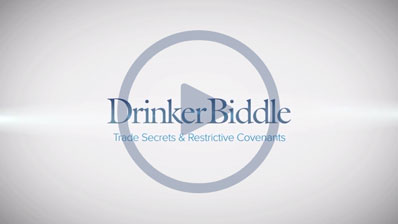On April 8, 2015, in Golden v. California Emergency Physicians Medical Group, the Ninth Circuit Court of Appeals broadly interpreted California’s statutory provisions regarding restrictive covenants in the context of reviewing a common clause included by employers in settlement agreements. Though the Court declined to decide the ultimate issue – the validity of “no reemployment” clauses – the Court’s broad reading of California’s restrictive covenant statute is alarming.
After he was let go from his employment with California Emergency Physicians Medical Group (“CEPMG”), Dr. Robert Golden (“Golden”) filed a lawsuit in state court alleging a number of statutory wrongful termination claims. After CEPMG removed the case, the parties reached an oral settlement agreement. Later on, CEPMG memorialized the oral agreement into a written settlement agreement, which contained a provision that precluded Golden from returning to work at CEPMG – i.e., a “no reemployment” clause. Specifically, the no reemployment clause at issue provided, in relevant part, that Golden waived all rights to employment with CEPMG or at any facility that CEPMG may own or with which it may contract in the future. The no reemployment clause further provided that if CEPMG contracted to provide services to, or acquires rights in, a facility that is an emergency room at which Golden was employed, the company had the right to terminate Golden, without incurring any liability.
Golden refused to sign the written settlement agreement and CEPMG moved to enforce it. Ultimately, a District Court ordered Golden to sign the settlement agreement, finding that it did not run afoul California law because it was not a non-compete agreement. Golden appealed.
Before the Ninth Circuit, Golden argued that the no reemployment provision in the settlement agreement violated California Business and Professions Code section 16600 (“Section 16600”), which contains California’s statutory restrictions on restrictive covenants. CEPMG argued that because the no reemployment provision was not a non-compete agreement – i.e., it did not preclude Golden from working for one of CEPMG’s competitors – it was not unlawful.
The majority of the three-judge panel held that the District Court’s interpretation of Section 16600 was incorrect. The Court noted that the California Supreme Court had not specifically addressed whether Section 16600 applied only to “typical so-called ‘non-compete covenants.’” However, it noted that the language of Section 16600 was extremely broad – making unlawful “every contract by which anyone is restricted from engaging in a lawful profession, trade, or business of any kind.” Examining the few exceptions that the California Legislature had carved out to Section 16600, the Court found that the context of the statute suggested that California had intended it to apply more broadly because of the particularity of the exceptions. The Ninth Circuit, thus, held that “the crux of the inquiry under [S]ection 16600 is not whether the contract constituted a covenant not to compete, but rather whether it imposes ‘a restraint of a substantial character’ regardless of ‘the form in which it is cast.’” Although the Court declined to determine, for itself, the exact boundaries of Section 16600, it remanded the case to the District Court for it to determine the validity of the agreement using a broader interpretation of Section 16600.
Infamously, California has some of the toughest limitations on restrictive covenants in the nation. Yet, employers have routinely included the type of provision at issue in Golden in employment settlement agreements, without concern.
It is unclear how Golden will be interpreted over time, particularly what restrictions courts may determine to be “of a substantial character.” Notably, the potential restraint on Golden as a result of the agreement was arguably more expansive than is typically the case, given CEPMG’s large market share and the potential for the immediate termination of Golden’s employment if CEPMG expanded. Nonetheless, Golden is a clear declaration that Section 16600 is not limited solely to traditional non-compete agreements.
Golden follows other recent decisions, enforcement actions and agency opinions which collectively have challenged the assumption that various common settlement and separation provisions are valid and enforceable. For example, as noted here,the EEOC has been challenging the validity of cooperation, non-disparagement, non-disclosure, and release provisions in separation agreements, arguing that they interfered with employees’ rights to file administrative charges and participate in EEOC investigations. Similarly, as noted here, the SEC recently for the first time used its enforcement powers under Rule 21F-17 of the Whistleblower provisions of the Dodd-Frank Act to impose a civil penalty on an employer for using a confidentiality agreement during internal investigations which, in the SEC’s opinion, restricted an employee’s ability to report potential securities violations. Finally, as discussed here, the NLRB has recently opined that handbook confidentiality provisions intended to protect confidential information and trade secrets may have the effect of unlawfully inhibiting employees from engaging in protected activities under the NLRA, such as discussing wages, criticizing management, publicly communicating about working conditions and discussing unionization.
These developments collectively challenge many of the benefits and protections afforded to employers by resolving disputes or potential disputes through separation, severance, release and settlement agreements. Employers should thus reevaluate the provisions they have traditionally used, to ultimately determine whether utilizing such agreements is indeed an effective deterrent against future potential disputes, or worth the potential litigation that may result from using language that is unlawful under Section 16600.





